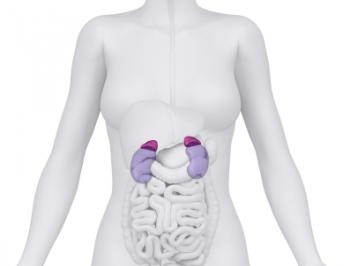 |
| The researchers found that 72% of African American participants with FSGS - a form of kidney disease - had variants in the APOL1 gene. |
Image Source: medicalnewstoday.com
Focal segmental glomerulosclerosis (FSGS) is scarring in kidney tissue that affects more than 5,000 people in the US every year. Symptoms of the condition include foamy urine (caused by excess protein), weight gain, swelling (caused by excess body fluids) and poor appetite.
According to the researchers, FSGS is known to be more common among African Americans; compared with European Americans, African Americans are four times more likely to develop the condition.
Previous research has indicated that African Americans are at higher risk of chronic kidney disease (CKD) due to variants in apolipoprotein L1 (APOL1) - a gene that makes a protein that forms a part of high-density lipoprotein (HDL), referred to as "good" cholesterol. Around 5 million African Americans possess such variants.
72% of African Americans with FSGS had variants in APOL1
For their study, Dr. Kopp and colleagues assessed how APOL1 variants influenced FSGS among 94 individuals of variety of ethnicities, including African American, Hispanic and European American.From analyzing genetic data and health information for each participant, the researchers found those that had variants in the APOL1 gene were more likely to be at an advanced stage of FSGS when they were diagnosed with the condition. In addition, 72% of participants who identified themselves as African American were found to possess such variants.
The researchers also found APOL1 gene variants in two Hispanic participants and two European American participants; these variants have never before been reported in these ethnicities, according to the researchers.
Dr. Kopp and colleagues also tested medication response among individuals with APOL1 gene variants.
Past research has shown that people with two variants in APOL1 react to glucocorticoids - a class of steroid hormones - showing a reduction in the amount of protein secreted in urine. Many of these individuals, however, continue to progress toward kidney failure.
On testing cyclosporine and mycophenolate mofetil - immunosuppressant drugs used to prevent organ rejection after transplantation - among participants in this study, the researchers found they produced similar effects in subjects with APOL1 variants as glucocorticoids.
Commenting on this finding, Dr. Kopp says:
"New therapies targeting APOL1 injury pathways are needed, as standard therapies do not work for many people with this gene variant."Overall, the researchers hope their study - described as reporting one of the strongest ever genetic associations for a common disease - helps to improve diagnosis and treatment of FSGS.
Commenting in an editorial linked to the study, Dr. Christopher Larsen, from Nephropath - a biopsy interpretation practice in Little Rock, AR - and Dr. Barry Freedman, of the Wake Forest School of Medicine in Winston-Salem, NC, describe the results from Dr. Kopp and colleagues as "informative."
They note, however, that the findings are not encouraging because the majority of individuals with variants in APOL1 experience poor outcomes.
Dr. Paul Frymoyer is a nephrologist practicing in Manlius, New York. Click here for interesting discussions on nephrology trends, issues, and research.









